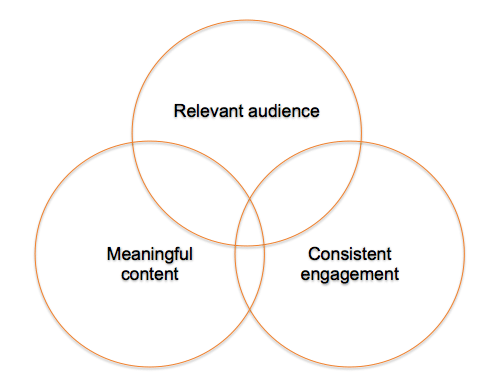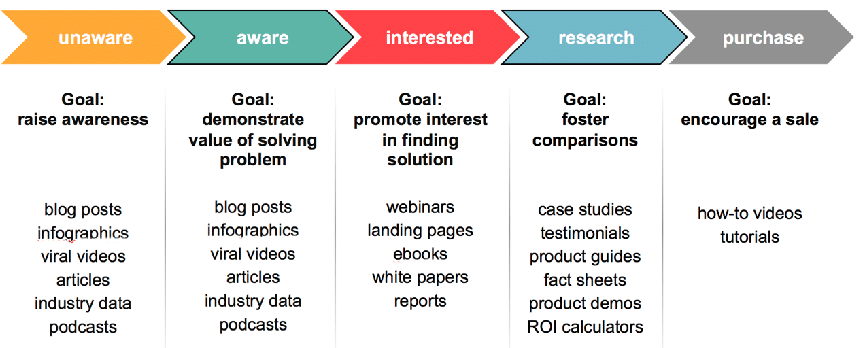Secrets to a successful content marketing strategy
"The goal of a successful content marketing strategy is to have a disproportionate share of the conversation going on in your industry." This was an often heard quote at the second annual Content Marketing World event held recently in Sydney, Australia by the Content Marketing Institute (CMI), which helps brands attract and retain customers through compelling, multi-channel storytelling. There are various definitions of content marketing floating around the web, and perhaps even around your office. "Our website is full of content. So, that's content marketing, right?'' "We have a blog. That's all content marketing is, isn't it?" "What about our Facebook page? Does that count?" As the go-to authority on content marketing, we'll turn to CMI for a handy, universal definition: "Content marketing is the strategic marketing approach of creating and distributing valuable, relevant and consistent content to attract, engage, and acquire a clearly defined audience – with the objective of driving profitable customer action." Content marketing is not a direct sell, rather, its purpose is to change or enhance consumer behaviour. To do this, your brand needs to be seen as a credible and knowledgeable expert on a given subject matter. And one of the most effective ways to earn this reputation is for others to share this message, not you.
In other words, you need endorsements, not a megaphone.
In essence, content marketing has been around for eons, it just hasn't been formally recognised as a clear process and strategic element within an organisation's marketing plans until recently. But rest assured, this is not just a buzz word, and as each marketer's toolkit gets ever bigger and each customer's attention span gets ever shorter, the power of content marketing has intensified. And it's not just marketing gurus who have taken note. Some of the biggest brands in the world and the most powerful CEOs have gotten behind a content marketing approach, and the others... well, they're just trying to keep up. To make sure your brand falls into the former category, let's dive in with several tips and best practices shared at the recent CM World to ensure you create and distribute content effectively.
Do a content audit
Chances are, the longer your brand has been around, the more content you have. Before you start to think about how each piece of content will align with your brand's goals, you might first find it helpful to conduct a content audit and create an all encompassing inventory of the content you already own.

- What is our objective?
- What are we trying to achieve and who are we trying to reach?
- Who do we want to talk to?
- What do we want them to understand?
- What is in place already?
- How do we scale up?
To these, Jesse Desjardins, Social Media and Advocacy Manager with Tourism Australia, would add:
- Can we build a content platform that can grow over time?
- Is our strategy repeatable and scalable?
- Does it lead a customer on a path to purchase?
- Who can we partner with?
- Can we make our audience the hero?
- How much value are we capturing?
- Are we sharing our work?
Mr Pulizzi also emphasised quality over quantity: "You must develop best-in-class content. Your content must be more valuable than what your competitors are doing. You can't just tell a story better. To stand out, you have to tell a different story."
To do so, lean on your strengths and focus on your unique selling points.
But be careful not to put sales at the front of the process. Emma Rugge-Price, Vice President of Branding and Communications at GE Australia and New Zealand, said things changed for them as soon as they "started to think like a publisher." Indeed, this mindset shift is taking place in major corporations around the world. Mr Pulizzi elaborates: "Content marketing has now become a critical component in all organisations. Right now, enterprises are adding content marketing, editor and journalism-based roles to their companies. We see this evolving into a situation where content marketing is becoming less of a department and more of an approach, where there is a content centre of excellence in the organisation that works within all product silos. It's tough to say for sure what the best solutions will be, but it's clear that the marketing department as a whole is looking and feeling more like a publishing group." One inspiring example of this approach that was shared throughout the conference was that of JyskeBank.tv, a television station run by the second largest independent bank in Denmark, or is it a bank with its very own TV station? The lines are blurred but the picture is clear: this radical approach has enabled Jyske to build brand awareness, solidify their reputation, and retain customer loyalty - all on their own platform and through their own voice. Not every brand can own their own film studio, but a successful content marketing strategy doesn't need to be so elaborate. Another high profile speaker at CM World was Mark Schaefer, author and marketing consultant. He believes that content marketing success is achieved when you strike a balance between three key elements:
- Relevant audience
- Meaningful content
- Consistent engagement

When all three work together, you are able to generate what he calls "return on influence," and this is how you create content that moves across the web and ignites action.
Using content effectively
So, you've got your content audit and your strategy. The next step is marrying the two.
Industry expert Kevin Cain offered up a highly practical content matrix that could be used when plotting your content against your strategy. As the visual below shows, you'll need to ensure that each piece of content is reaching your audience at the right stage in the buying process.

















